#house of xtravaganza
Explore tagged Tumblr posts
Text
118 notes
·
View notes
Text

27 notes
·
View notes
Text
Paris Is Burning Sticker Set / T Shirt
Inspired by the groundbreaking documentary that captured the vibrant ballroom culture of New York City in the late 1980s

#paris is burning#lgbt#crystal labeija#transgender#pepper labeija#dorian corey#house of xtravaganza#nyc ballroom#house of labeija#pride month 2023#everything is yours#opulence you own everything#reading is fundamental#paris is burning 1990#paris is burning film#pose#lgbtqia#dragqueen#voguing#parisisburning#ballroom#noshedidnt#henny#pride#dragshow#lgbtq
0 notes
Text
instagram
1 note
·
View note
Text
Tribeca 2024 Film Review: I'm You Venus ★★★★★
Rising New York ballroom legend and trans icon Venus Xtravaganza was killed aged 23 in December 1988 and her murder remains unsolved. Venus has lived on as a gentle, captivating, playful, and vibrantly indelible light in Jennie Livingston’s 1991 documentary Paris Is Burning, which featured Venus describing her life as it was and her dreams for the future of a modeling career, and being a wife and…

View On WordPress
#house of xtravaganza i&039;m your venus#i&039;m your Venus documentary review#i&039;m your venus film review tribeca 2024#i&039;m your venus review#i&039;m your venus tribeca review#kimberly reed i&039;m your venus review#lgbtq#LGBTQ documenary#lgbtq film#The Queer Review#trans#trans documentray#trans history#transgender#tribeca festival i&039;m your venus review#venus pellagatti xtravaganza#Venus Xtravaganza
2 notes
·
View notes
Text
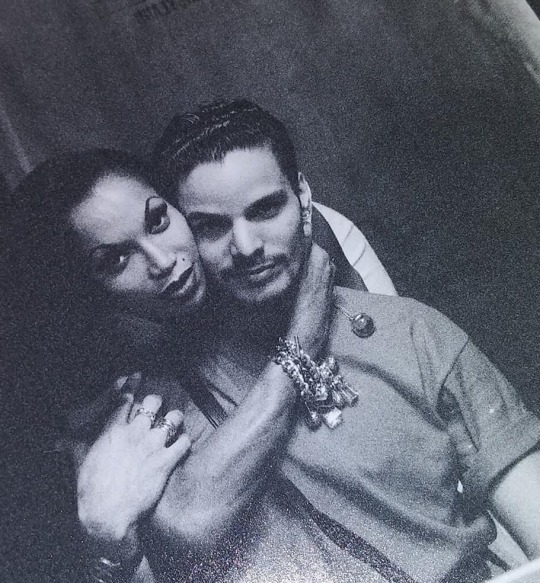
Octavia and Hector
#Octavia St. Laurent#Hector Xtravaganza#Icons#Legendary#RIP#Vogue#House of Xtravangza#House of St. Laurent#Ballroom#LGBTQ+
16 notes
·
View notes
Text



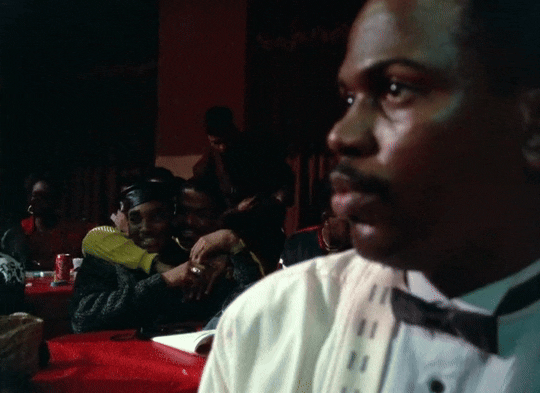
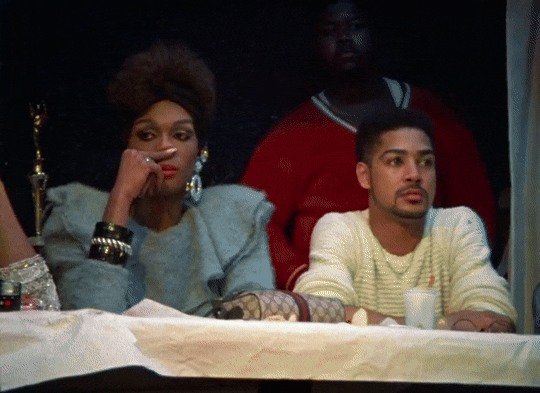





PARIS IS BURNING (1990) dir. Jennie Livingston A vibrant snapshot of the 1980s through the eyes of New York City’s ball scene. Made over seven years, the documentary offers an intimate portrait of rival fashion “houses,” from fierce contests for trophies to house mothers offering sustenance in a world rampant with homophobia, transphobia, racism, AIDS, and poverty. Featuring legendary performers like Willi Ninja, Pepper LaBeija, Dorian Corey, and Venus Xtravaganza, it is a celebration of the joy of movement, the force of eloquence, and the draw of community. (link in title)
#paris is burning#lgbt cinema#queer cinema#us cinema#lgbt#trans#gay#transgender#drag#usa#1990#Pepper LaBeija#willi ninja#Venus Xtravaganza#Octavia St. Laurent#paris dupree#dorian corey#Jennie Livingston#1990s#90s#90s cinema#1990s cinema#north american cinema#lgbt documentary
123 notes
·
View notes
Text

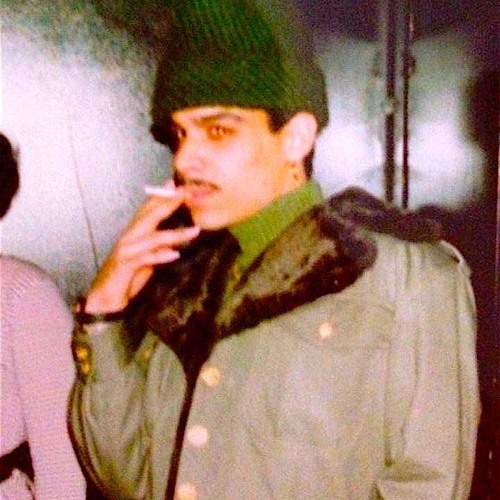
Danni (Danny) Xtravaganza (deceased)
Gender: Male (she/her in drag)
Sexuality: Gay
DOB: 14 July 1961
RIP: 9 January 1996
Ethnicity: Puerto Rican
Occupation: Drag artist, musician
Note 1: Founding member of the House of Xtravaganza.
Note 2: Had HIV
#Danni Xtravaganza#Danny Xtravaganza#paris is burning#lgbt history#lgbt#male#gay#1961#rip#historical#puerto rican#hispanic#poc#drag artist#musician#hiv
86 notes
·
View notes
Text
Paul Xtravaganza, Thomas Chanel & Gabriel JovanDeja walking the Butch Queen X-Rated Body Category @ The House of Milan’s Alphabet Ball, 1993
301 notes
·
View notes
Text


Queer Hispanic Stories for Hispanic Heritage Month
Summaries and notes under cut
Juliet Takes a Breath by Gabby Rivera
Juliet Milagros Palante is leaving the Bronx and headed to Portland, Oregon. She just came out to her family and isn’t sure if her mom will ever speak to her again. But Juliet has a plan, sort of, one that’s going to help her figure out this whole “Puerto Rican lesbian” thing. She’s interning with the author of her favorite book: Harlowe Brisbane, the ultimate authority on feminism, women’s bodies, and other gay-sounding stuff. Will Juliet be able to figure out her life over the course of one magical summer? Is that even possible? Or is she running away from all the problems that seem too big to handle? With more questions than answers, Juliet takes on Portland, Harlowe, and most importantly, herself.
Winner of 2017 Silver IPPY Award for best LGBTQ Fiction, selected by the ALA for the Amelia Bloomer List in 2017
The Prince and the Coyote by David Bowles, illustrated by Amanda Mijangos*
Fifteen-year old crown prince Acolmiztli wants nothing more than to see his city-state of Tetzcoco thrive. A singer, poet, and burgeoning philosophical mind, he has big plans about infrastructure projects and cultural initiatives that will bring honor to his family and help his people flourish. But the two sides of his family, the kingdoms of Mexico and Acolhuacan, have been at war his entire life – after his father risked the wrath of the Tepanec emperor to win his mother’s love. When a power struggle leaves his father dead and his mother and siblings in exile, Acolmiztli must run for his life, seeking refuge in the wilderness. After a coyote helps him find his way in the wild, he takes on a new name – Nezahualcoyotl, or “fasting coyote” (“Neza” for short). Biding his time until he can form new alliances and reconnect with his family, Neza goes undercover, and falls in love with a commoner girl, Sekalli. Can Neza survive his plotting uncles’ scheme to wipe out his line for good? Will the empire he dreams of in Tetzcoco ever come to life? And is he willing to risk the lives of those he loves in the process? This action-packed tale blends prose and poetry – including translations of surviving poems by Nezahualcoytl himself, translated from classical Nahuatl by the author. And the book is packed with queer rep: queer love stories, and a thoughtful exploration of pre-columbian understandings of gender that defy the contemporary Western gender binary.
Pura Belpré honoree, Kirkus Best of the Year, Bookpage top 10 Book of 2023
*Personally recommended by me
The House of Impossible Beauties by Joseph Cassara
It’s 1980 in New York City, and nowhere is the city’s glamour and energy better reflected than in the burgeoning Harlem ball scene, where seventeen-year-old Angel first comes into her own. Burned by her traumatic past, Angel is new to the drag world, new to ball culture, and has a yearning inside of her to help create family for those without. When she falls in love with Hector, a beautiful young man who dreams of becoming a professional dancer, the two decide to form the House of Xtravaganza, the first-ever all-Latino house in the Harlem ball circuit. But when Hector dies of AIDS-related complications, Angel must bear the responsibility of tending to their house alone. As mother of the house, Angel recruits Venus, a whip-fast trans girl who dreams of finding a rich man to take care of her; Juanito, a quiet boy who loves fabrics and design; and Daniel, a butch queen who accidentally saves Venus’s life. The Xtravaganzas must learn to navigate sex work, addiction, and persistent abuse, leaning on each other as bulwarks against a world that resists them. All are ambitious, resilient, and determined to control their own fates, even as they hurtle toward devastating consequences.
Born Both: An Intersex Life by Hida Viloria
My name is Hida Viloria. I was raised as a girl but discovered at a young age that my body looked different. Having endured an often turbulent home life as a kid, there were many times when I felt scared and alone, especially given my attraction to girls. But unlike most people in the first world who are born intersex–meaning they have genitals, reproductive organs, hormones, and/or chromosomal patterns that do not fit standard definitions of male or female–I grew up in the body I was born with because my parents did not have my sex characteristics surgically altered at birth. It wasn’t until I was twenty-six and encountered the term intersex in a San Francisco newspaper that I finally had a name for my difference. That’s when I began to explore what it means to live in the space between genders–to be both and neither. I tried living as a feminine woman, an androgynous person, and even for a brief period of time as a man. Good friends would not recognize me, and gay men would hit on me. My gender fluidity was exciting, and in many ways freeing–but it could also be isolating. I had to know if there were other intersex people like me, but when I finally found an intersex community to connect with I was shocked, and then deeply upset, to learn that most of the people I met had been scarred, both physically and psychologically, by infant surgeries and hormone treatments meant to “correct” their bodies. Realizing that the invisibility of intersex people in society facilitated these practices, I made it my mission to bring an end to it–and became one of the first people to voluntarily come out as intersex at a national and then international level. Born Both is the story of my lifelong journey toward finding love and embracing my authentic identity in a world that insists on categorizing people into either/or, and of my decades-long fight for human rights and equality for intersex people everywhere.
Her Body and Other Parties by Carmen Maria Machado
In Her Body and Other Parties, Carmen Maria Machado blithely demolishes the arbitrary borders between psychological realism and science fiction, comedy and horror, fantasy and fabulism. While her work has earned her comparisons to Karen Russell and Kelly Link, she has a voice that is all her own. In this electric and provocative debut, Machado bends genre to shape startling narratives that map the realities of women’s lives and the violence visited upon their bodies. A wife refuses her husband’s entreaties to remove the green ribbon from around her neck. A woman recounts her sexual encounters as a plague slowly consumes humanity. A salesclerk in a mall makes a horrifying discovery within the seams of the store’s prom dresses. One woman’s surgery-induced weight loss results in an unwanted houseguest. And in the bravura novella “Especially Heinous,” Machado reimagines every episode of Law & Order: Special Victims Unit, a show we naively assumed had shown it all, generating a phantasmagoric police procedural full of doppelgängers, ghosts, and girls-with-bells-for-eyes.
Finalist for the 2017 National Book Award for Fiction, Winner of the National Book Critics Circle's 2017 John Leonard Prize, Winner of the 2017 Bard Fiction Prize, Finalist for the 2017 Kirkus Prize, Finalist for the 2017 PEN/Robert Bingham Award
#queer books#hispanic heritage month#juliet takes a breath#the prince and the coyote#the house of impossible beauties#born both#her body and other parties#digital display
13 notes
·
View notes
Text

Stephanie (Xtravaganza), House of Latex Ball 2003
351 notes
·
View notes
Text
MOGAI BHM- Day 13!
happy BHM! today i’m going to be talking about ballroom culture!
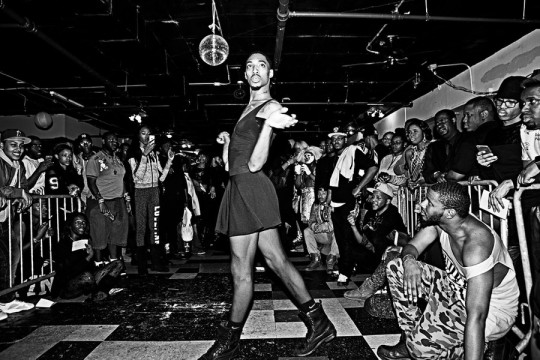
[Image ID: A black-and-white photograph of a drag ball. In the photo, a crowd of Black people are standing around a gated area in a room, watching a Black man, dressed in a short black dress and black combat boots, dance and pose on the tiled floor. End ID.]
The history of drag ball culture can be traced to the 1920s in New York City, just before queer culture began to rise in Harlem and the Harlem Renaissance- however, at this time, mainstream drag balls were pretty much all white. Black performers were allowed to participate, but they were asked to lighten their skin in order to do so, and were often judged harshly and unfairly by completely white judge panels.
This horrible racist abuse led Black and other non-white queer people, especially indigenous and Latino queers, to form their own drag ball subculture. They would organize their own balls, sometimes in official drag ballrooms, and sometimes in their own homes, and drag ball culture really grew during the 60s, 70s, and 80s.
During this time, drag ball culture was organized into different “Houses”, which were official establishments of the culture and events, but also frequently served as solace and shelter for Black and Latino LGBTQ people who had been kicked out of their homes or were facing violence for their identities. These Houses were based on the concept of family and love and defiance, and were the soul of drag ball culture. The first house, which kickstarted ballroom culture from the 1960s on, was the LaBeija House, founded by Crystal and Lottie LaBeija in the 1960s as a response to the racism they’d experienced in extant drag scenes in New York City.
There were many, many, many Houses that participated in drag ball culture- some of the most famous ones include The House Of Ebony, The House Of Xtravaganza, and the House of Ninja. All houses were led by “mothers” and “fathers”, usually elder members from drag ball culture.
Drag scenes in this time period consisted of several different opportunities, mainly for lesbians, both cis and trans, gay men, and trans women. Contestants would “walk” (perform) and participate in different categories based on their identity or how they expressed themselves. These categories produced a lot of queer language as we know it today.
Two terms that originated with/were popularized by ballroom culture of the late 1900s, were ‘butch queen’ and ‘femme queen’. ‘Butch queen’ was a category for performers who were gay men but did not possess hyperfeminine or hypermasculine qualities/expressions, but rather a combination. The term was for a uniquely queer celebration of a blending of masculinity and femininity. ‘Femme queen’ was a category for people who would today be considered transgender women- people who were born ‘male’ but sought forms of gender, sexual, and/or social transition to live and present as a woman.
Femme queens and butch queens were the biggest parts of drag culture. They accompanied other categories, like for butches (not butch queens) who were masculine lesbians. Other categories highlighted ‘Realness’ (the ability of performers to ‘pass’ as straight men/women), ‘business executive’, and several categories that allowed men to still be masculine and women to still be feminine.
Language was very important in drag ball culture. ‘Femme’, ‘butch’, ‘queen’, they all described an aspect of queerness that was personal and yet political at the same time. This dedication to queer language led to the development of unique terms and language to define aspects of ballroom culture- in fact, most modern ‘queer’ language has been appropriated by white queer people from ballroom culture. Terms like ‘spilling tea’, ‘work’, ‘slay’, ‘yass queen’, and many others, all originate from ballroom culture. Many popular dance trends and moves, including the infamous ‘voguing’, also originate from the dance aspects of ballroom culture.
Although the history of drag kings is very often overlooked, they were and just as integral to drag culture as drag queens are. There were drag ball categories for trans men, butch trans men, and for trans men to ‘pass’ as gay men. Butch and trans men categories and experiences in this culture were emphasized and related, building the shared history between butch lesbian and trans male communities. queer history is inextricable from this kind of Black and Latino history. Queer language is not just queer language, and its history deserves to be known and respected.
Sources-
https://mozartcultures.com/en/understanding-the-ballroom-culture-its-incredible-impact-on-the-world/
https://www.allgaylong.com/blog/a-brief-history-of-modern-ballroom-culture/
https://en.wikipedia.org/wiki/House_of_LaBeija
https://time.com/5941822/ballroom-voguing-queer-black-culture-renaissance/
@metalheadsforblacklivesmatter @intersexfairy @cistematicchaos
139 notes
·
View notes
Text
"For the first hour of the film, Stan’s Trump is, deliberately, not the man we know today: his voice has a slight Queens bray, but he avoids all the caricaturist’s tics, murmurs softly and almost tenderly at times, even when describing his ambitious. Stan plays him as he’s written, nervous and unformed and frankly sympathetic"
Little White Lies (click for article)
Mark Asch
The Apprentice – first-look review
Ali Abbasi's attempted takedown of America's previous (and perhaps next) President of the United States, charting his early years under the mentorship of Roy Cohn, lacks the killer instinct.
Did you know Donald Trump is in Paris Is Burning? No, really: in Jennie Livingston’s seismic documentary on New York’s queer ballroom scene, an independent film about people at the margins, there’s an insert shot of a Forbes magazine cover: “What I Learned in the 80s” is the cover feature, and right underneath it, back row center in an illustration of various one-percenters luminaries, there he is, in between check-ins with Willi Ninja and Venus Xtravaganza.
When Trump was elected President of the United States in 2016, so much of American culture became retrospectively seeded with Easter eggs foreshadowing his eventual ascent to the seat of power; future generations, unlike mine, will have no trouble imagining how this could possibly have happened. For so long Trump was present within discourses on business, crime, race, and politics; he was in Home Alone 2 and had a show on NBC; he was a late-night talk-show punchline and appeared at Wrestlemania. He was so ubiquitous, for so long — how could he not have become President?
The point I want to make here is that there is very little we don’t know about Donald Trump; his rise to the White House was accompanied and indeed fueled by wall-to-wall coverage across all forms of media, which during his (first) term as President enjoyed a boom in readership and revenues — there was always another article breaking another new scandal, or unearthing another embarrassing episode from his past that had been hiding in plain sight all along.
It is, then, very difficult to make a movie that has something new to say about Donald Trump, that tells a new story or shows a new side of the most famous person — probably — you’re not supposed to say this — but they’re saying — many people are saying — he’s the most famous person, frankly, that we’ve ever seen, and we’re seeing him more and more. The task before The Apprentice — a biopic telling the story of Trump’s rise in the New York real estate world in the 70s and 80s, abetted by the notorious fixer Roy Cohn — is therefore a formidable one, and it’s not a task to which director Ali Abbasi and screenwriter Gabriel Sherman prove remotely equal.
The film begins in New York City, in the 70s, at an exclusive members’ club where Trump (Sebastian Stan), the twentysomething son of outerboro slumlord Fred (an unrecognizable Martin Donovan), restlessly narrates the power players in the room to his bored date; Trump is an outsider, a striver, palpably uncomfortable — but there, through a doorway, doing the Kubrick Stare, is Roy Cohn, former Joe McCarthy aide during the the Red Scare of the 1950s and infamous lawyer for mobsters and other power players, publicly revealed after his death from AIDS to be a closeted gay man. Cohn takes an interest in Trump, and smooths the wheels for his first big deal, the overhaul of the old Commodore on Manhattan’s then-decrepit 42nd Street.
Trump’s relationship with Cohn was widely reported on during his presidency, so much so that Cohn — a figure notorious enough to have been played by James Woods in a TV movie in the 1990s, and Al Pacino in the HBO miniseries of the Pulitzer-winning Angels in America — has been retconned as primarily Trump’s mentor; a feature-length documentary about him is titled Where’s My Roy Cohn?, after an Oval Office lament. So it’s not exactly newsworthy that the film credits Cohn with teaching Trump to affect a brashness and flair and to learn to attack, deny, and dominate the narrative — nor are these particular novel insights into Trump.
For the first hour of the film, Stan’s Trump is, deliberately, not the man we know today: his voice has a slight Queens bray, but he avoids all the caricaturist’s tics, murmurs softly and almost tenderly at times, even when describing his ambitious. Stan plays him as he’s written, nervous and unformed and frankly sympathetic, genuinely drawn to Ivana (Maria Bakalova) for her ambitions, a finicky and unschooled naïf wandering around Cohn’s decadent parties avoiding the drugs and gay sex. He’s a would-be shark so doughy and vague as to be almost sympathetic, like the budding young Nazi collaborator of Louis Malle’s Lacombe, Lucien.
The almost sympathetic cast of the film’s first hour is, I suppose, a fresh perspective, but equally an offensive and shallow one, driven less by any particular insight into the perverse incentives of American society — the film is remarkably insular, shot largely on soundstage recreations of the Trump home in Jamaica Estates, the penthouse in Trump Tower, the backs of various limos and the offices of various power brokers — than by the dictates of a character arc in which Cohn and Fred are obviously posited as polar opposite father figures, demanding and competitive men after whom Donald models himself and whose approval he seeks.
A number of things change at the film’s halfway mark. The film switches from a celluloid to a digital look — throughout, Abassi and cinematographer Kasper Tuxen ape the period of the action, from seamy red-tinted narrow-gauge for the gritty 70s to a bleary pixelated look that improves throughout the 80s—a gesture that would give the film an appealing momentum and raw texture were the narrative not so wedded to the historical record, with cutesy cameos from Warhol and Rupert Murdoch, and knowing references to the Trump Tower elevators, MAGA, and other future features of American life. Stock-footage montages exposit the eras’ historical context via potted histories of New York City, with an unclear point of view on the cycle of urban decline and rebirth in the postwar era: though lightly in quotation marks, they also seem objective accounts of a general historical record that gives credence to the narrative of White Flight–era NYC as “Fear City” (an image of lawlessness Trump long exploited, first as a developer and then as a demagogue), and of the go-go Reagan 80s, the decade in which Trump applied all of what he learned in the 70s, and of which he became an avatar.
At this point in the film, Stan’s dialogue takes on the familiar turns of phrase, the verbal and physical mannerisms: the diet pill— the pursed lips, the overenunciation and theatrical hand gestures, the addled mile-a-minute grandiose rants and flippant dismissals and breathtaking glibness and oddly matronly cattiness. It’s funny, but hardly virgin territory the years we’ve spent enjoying the work of comedians like James Austin Johnson and that one friend of yours who sends you voice memos in the Trump voice talking about the discourses of the day, impersonators who reshape the news by pushing the man’s implicit grotesquery and absurdity to the fore.
This Trump gets more flagrantly cruel to Ivana, delusional, thin-skinned and aggressive. It’s the kind of charismatic antihero’s journey that might fly in a Scorsese film — arguably the ultimate Trump film is The Wolf of Wall Street — but Abassi and Sherman’s take on the material is largely dutiful. The soundtrack aspires to an incongruously feel-good high-energy looseness that the film doesn’t back up. I’ve never been unhappier to hear Suicide, Pet Shop Boys or New Order, and the smash cut and needle drop that takes us out of after Trump’s rape of Ivana (a scene from her divorce deposition, staged as literally and luridly as you’d expect from the director of Holy Spider) is especially egregious.
Maybe there’s supposed to be a larger point about Trump’s political movement in the way that he’s shown to abandon Cohn as his former mentor’s legal aides and health woes pile up, but Cohn recedes from the narrative in the second half of the film, which is much less grounded in their relationship; though as Cohn weakens from a virus he steadfastly denied, the second hour is his turn to be portrayed more sympathetically than he deserves.
Strong has the same problem in his performance as Stan, in that Cohn is almost as media-saturated a figure as Trump. Strong gives Cohn a low, aggressive voice, slightly nasal and rounded, with casual and cruel inflections tossed out at a Succession-trained tempo; he bobs his neck up and down like a turtle on each syllable, but holds it forward tentatively as if the muscles are atrophying, as Cohn becomes frailer. It’s a credible performance, not remotely campy, but not really anything — there’s nothing here like the perspective on the role as interpreted by, say, the underground theater legend Ron Vawter in his performance piece Roy Cohn/Jack Smith, in which he gave Cohn a shrill, mincing Jewish voice, flaunting the traits most concealed and loathed by his recently deceased subject.
Recognizable figures are a fun challenge for actors, as well as for the hair, makeup, and wardrobe departments tasked with recreating iconic looks that everyone remembers from recent history. This year, election season is also Oscar-movie season, and you can expect some attention from the crafts teams on The Apprentice and maybe Strong or Sherman (one of the many glossy-magazine journalists to enjoy an elevated profile since the Trump years). I’m sure their acceptance speeches will be full of righteous anger directed at the new administration.
PUBLISHED 21 MAY 2024
#the apprentice#the apprentice movie#the apprentice review#sebastian stan#donald trump#jeremy strong#roy cohn#maria bakalova#ali abbasi
4 notes
·
View notes
Note
Apparently one of jimin's backup dancers on Fallon also competes in balls for the house of xtravaganza! https://mobile.twitter.com/k_hwanggeumm/status/1639546440442851328
That paired with the nonbinary dancer that posted about it just... omg jimin. Idk how casting works for backup dancers, especially internationally, but I have to think he was involved in the process
Long live the LGTBI+ community!
33 notes
·
View notes
Text
Paris Is Burning
Continuing my series of learning about things referenced in the book, I'm looking at things Alex references when he talks about engaging with queer history. These are all tagged #a series of learning about things that are referenced in the book, if you want to block the tag.
Please note the following topics are metioned: murder, AIDS - and death due to complications, sexual violence, sex work, racism, queerphobia.
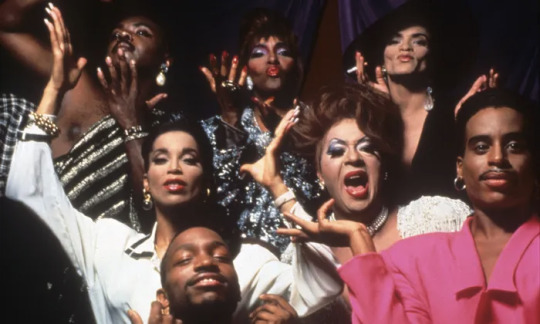
Paris is Burning is a documentary film, released in 1990, that focuses on the 1980s ball culture of Harlem (New York) and the communities of gay & transgender African-American &Latino people involved in that culture. It offers an exploration of race, class, gender, and sexuality in the US at that point in time. The AIDS crisis was growing in severity, and impacted many of the people involved with the documentary. Many of them have since died due to AIDS complications - including Angie Xtravaganza (age 28), Dorian Corey (age 56), and Willi Ninja (age 45).
Documentarian Jennie Livingston interviewed key figures in the ball world, and the film features monologues from many of which addresses their understanding of gender roles, subcultures of both the ball world and the queer world, as well as sharing their own life stories. It also provides an introduction to slang terms used within the subculture, such as house, mother, shade & reading. Interspersed with this is footage of colourful ballroom performances. The documentary also looks at how AIDS, racism, poverty, violence, and homophobia impacts their lives. Some of those involved became sex workers to support themselves, at great risk to their safety - one member is found strangled to death, seemingly by a client. The 'Houses' of the ball culture provide safety and security to those disowned by queerphobic parents, as well as those largely ostracised by mainstream society.
The documentary did have some criticisms - notably for reinforcing stereotypes, having a white filmmaker, and for not properly providing compensation - but it has remained important as a depiction of ball culture, the most prominent display until Drag Race began to popularise the concept to a wider audience.
-----
Ball culture - also known as the Ballroom Scene/Community, Ballroom Culture or just Ballroom - takes its origins from a series of drag balls, including those organised by William Dorsey Swann (the first person known to self-describe as a drag queen) in Washington DC, during the late 1800s. These drag balls were masquerade themed and took place to defy laws which banned people from wearing clothes of the opposite gender. Many early attendees were formerly enslaved men, and the events were held in secret. While balls were integrated during a time of racial segregation, non-white performers regularly experienced racism from the white judges and performers. This prompted Black and Latino performers to create their own spaces within the subculture, and the modern culture grew out from Harlem in the late 1960s, spreading to other major cities soon after.
The structural and cultural issues facing the community in 1980s New York - including poverty, racism, homophobia, as well as sexual violence and AIDS - didn't stop Ballroom from thriving, acting not only as an escape from real life but also offering those involved a support system that was not often present in other areas of their lives. The culture included a system of 'Houses' - headed by an elder queer person (although often not much older than those in the family), either a 'mother' (mostly gay men or trans women) or a 'father' (mostly gay men or trans men) - which would become a surrogate family for young queer Black and Latino youth who were estranged from family, homeless, and/or struggling to get by. House members would often take on the surname of their house parent, and the houses would compete together in balls - often with a specific style identifiable as belonging to that group.
Drag ball culture works to resist the dominant cultural norms people experience from wider society. The performers create a space to challenge gender roles and heteronormativity through subversive outfits, slang, and actions. It gives them a space to feel supported and to work through their abuse they experienced as members of minority groups.
The balls not only provide a community, but also provide spaces for education. Aware of the prevelence of AIDS and the lack of support, in 1990 the Gay Men's Health Crisis (GMHC) launched the Latex Ball to distribute health information to those involved in ball culture. Offering free HIV testing and prevention materials, it attracts thousands of people from around the world and is still active to this day.
-----
The importance of Paris is Burning continues to grow as the years pass. It was a rare film that focused on the lives of queer people of colour, whose charisma and humanity shines through in their witty to-camera interviews and their fierce routines and performances.[source]
Sources: Wikipedia - Paris is Burning Guardian - Burning down the house: why the debate over Paris is Burning rages on Vanity Fair (archived) - Paris Is Burning Is Back—And So Is Its Baggage Janus films - Paris is Burning Wikipedia - Ball Culture Rolling Stone - Striking a ‘Pose’: A Brief History of Ball Culture All Gay Long - A Brief History of Modern Ballroom Culture Shondaland - The Psychological and Political Power of Ball Culture
Additional Reading: Paris is Burning, 1990
#elio's#elio's meta#a series of learning about things that are referenced in the book#long post#alt text added#rwrb#red white and royal blue
18 notes
·
View notes
Text
Paris is Burning

Paris is Burning is a 1990 film that centers around the ball scene in New York. It takes its name from the annual ball held by Paris Dupree, which was also called Paris is Burning.
It is a short documentary, only around 40 minutes long. However, the ball scene is extremely complex. This film explores houses, which were groups of performers, categories, which were different types of presentation, and many other things, such as the intersection between drag queens and transgender women. It also explains where the term throwing shade and voguing came from, which were the most interesting parts to me.
I would highly recommend everyone watch it, since it is not only informative but also very emotional. My favorite quote is from Venus Xtravaganza, and perfectly encapuslates the feeling of being trans: "Some of them say that we’re sick, we’re crazy. And some of them think that we are the most gorgeous, special things on Earth.”
#queer history#queer#gay history#gay#lgbt#lgbt history#type: media#paris is burning#transgender#transgender history#trans history#drag#drag history#nyc collection
11 notes
·
View notes